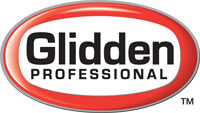COLOR OBSERVATIONS
The following chart list colors in the spectrum that can be coordinated with a manufacturers color palette.
Red |
In general, this color is interpreted as warm or hot. These hues come from the longer wavelengths of the spectrum. Warm colors from this area of the palette include raspberry, strawberry, cherry, watermelon, rouge, geranium, cranberry, maroon, burgundy, wine, ruby and crimson, which have the feeling of advancing toward the viewer.
Red:
• Captures Attention
• Considered Passionate
• Creates Vitality
• Encourages Movement
• Generates Excitement |
• Increases Pulse Rate
• Promotes Alertness
• Prompts Action
• Stimulates Appetite
• Suggests Strength |
|
Pink |
In general, this color is interpreted as warm or hot. These hues come from the longer wavelengths of the spectrum. Colors from this area of the palette include: Pink, rose, magenta, mauve, fuchsia, hot pink, shocking pink, bubblegum, carnation, primrose, petal pink, blush, peony and powder.
Pink:
• Considered Tender
• Conveys Delicate Disposition
• Expresses Feminine Quality
• Implies Innocence |
• Inspires Compassion
• Nurtures Affection
• Promotes Healthy Impression
• Radiates Caring Attitude |
|
Orange |
In general this color is interpreted as warm or hot. These hues come from the longer wavelengths of the spectrum. Warm colors from this area of the palette include melon, clay, salmon, coral, peach, apricot, rust, terra-cotta, shrimp, copper, mango, marigold and cinnamon and have the feeling of advancing towards the viewer.
Orange:
• Considered Fun
• Encourages Movement
• Expresses Emotion
• Gregarious Nature
• Implies Good Cheer |
• Invites Friendliness
• Playful Attitude
• Pleasurable Spirit
• Suggests Power |
|
Yellow |
In general, this color is interpreted as warm or hot. These hues come from the longer wavelengths of the spectrum. Warm colors from this area of the palette include ochre, buttercup, gold, almond, lemon, citrus, honey, brass, amber, sunflower, forsythia, jonquil, daisy and sunshine and have the feeling of advancing toward the viewer.
Yellow:
• Conveys Lightness
• Encourages Spontaneity
• Expresses Caution
• Indicates Innovation
• Implies Free Spirit |
• Inspires Creativity
• Offers Zest and Joyfulness
• Radiates Warmth
• Raises Alert Level |
|
Green |
In general, this color is interpreted as cool or cold. These hues come from the shorter wavelengths of the spectrum. The greens that are more yellow are considered warmer. Greens that are more blue are considered cooler. Colors from this area of the palette include sage, moss, lime, mint, hunter, celadon, olive, evergreen, leaf, emerald, fern, avocado, grass, spruce, clover and holly and have the feeling of receding away from the viewer.
Green:
• Enhances Concentration
• Facilitates Judgment
• Nurtures Relaxation
• Offers Balance |
• Promotes Security
• Provides Refreshing Atmosphere
• Renews Spirit
• Suggests Healing |
|
Teal |
In general, this color is interpreted as cool or cold. These hues come from the shorter wavelengths of the spectrum. Cool colors from this area of the palette include robin’s egg, teal, blue-green, aqua, turquoise, sea foam, jade and peacock and have the feeling of receding away from the viewer.
Teal:
• Balanced Appeal
• Calming Influence
• Conveys Unique Quality
• Communicates Gracefulness
• Expresses Refinement
• Inspires Harmony |
• Nurtures Sensitivity
• Refreshing Atmosphere
• Renews Spirit
• Soothing Demeanor
• Suggests Healing |
|
Blue |
In general, this color is interpreted as cool or cold. These hues come from the shorter wavelengths of the spectrum. Cool colors from this area of the palette include azure, delft, sky, denim, Wedgwood, blueberry, royal, periwinkle, cobalt, ultramarine and navy and have the feeling of receding away from the viewer.
Blue:
• Calming Spirit
• Combats Tension
• Cultivates Conservatism
• Offers Serenity
• Promotes Thoughtfulness |
• Provides Introspection
• Provides Introspection
• Soothing Nature
• Supports Relaxation
• Underscores Devotion |
|
Violet |
In general, this color is interpreted as cooler. These hues come from the shorter wavelengths of the spectrum. It should be noted that some violets, which are more blue may be considered cooler, while violets which are red will be slightly warmer in feeling. Colors from this area of the palette include iris, amethyst, lilac, orchid, purple, lavender, plum, grape, violet, eggplant and blackberry and generally have the feeling of receding away from us when cool.
Violet:
• Allows Meditation
• Contemplative Nature
• Conveys Royal Essence
• Expresses Mystery
• Introspective Persona |
• Intuitive Understanding
• Opulent Nature
• Sensitive Character
• Unique Quality
• Whimsical Personality |
|
Warm Neutrals |
WARM NEUTRALS Warm hues are the subdued tones that come from the longer wavelengths of the spectrum. These colors include khaki, oatmeal, bisque, chocolate, tea, desert, toast, mahogany, cream, straw, vanilla, off-white, tan, taupe, beige, ivory, oyster, pearl, sand, bronze and brown and have the feeling of subtly advancing toward the viewer.
Warm Neutrals:
• Comfortable Attitude
• Conservative Nature
• Implies Stability
• Communicates Gracefulness |
• Promotes Secure Feeling
• Suggests Subtle Warmth
• Versatile Nature |
|
Cool Neutrals |
In general, this color area is interpreted as cool. These hues include colors of fog, ebony, stainless, pewter, smoke, ash, chrome, white, frost, grey, charcoal, slate, graphite, onyx, silver & stone & have the feeling of subtly receding away from the viewer.
Cool Neutrals:
• Implies Sophistication
• Introspective Nature
• Soothing Atmosphere |
• Subdues Emotional Response
• Suggests Subtle Coolness
• Versatile Nature |
|
|









